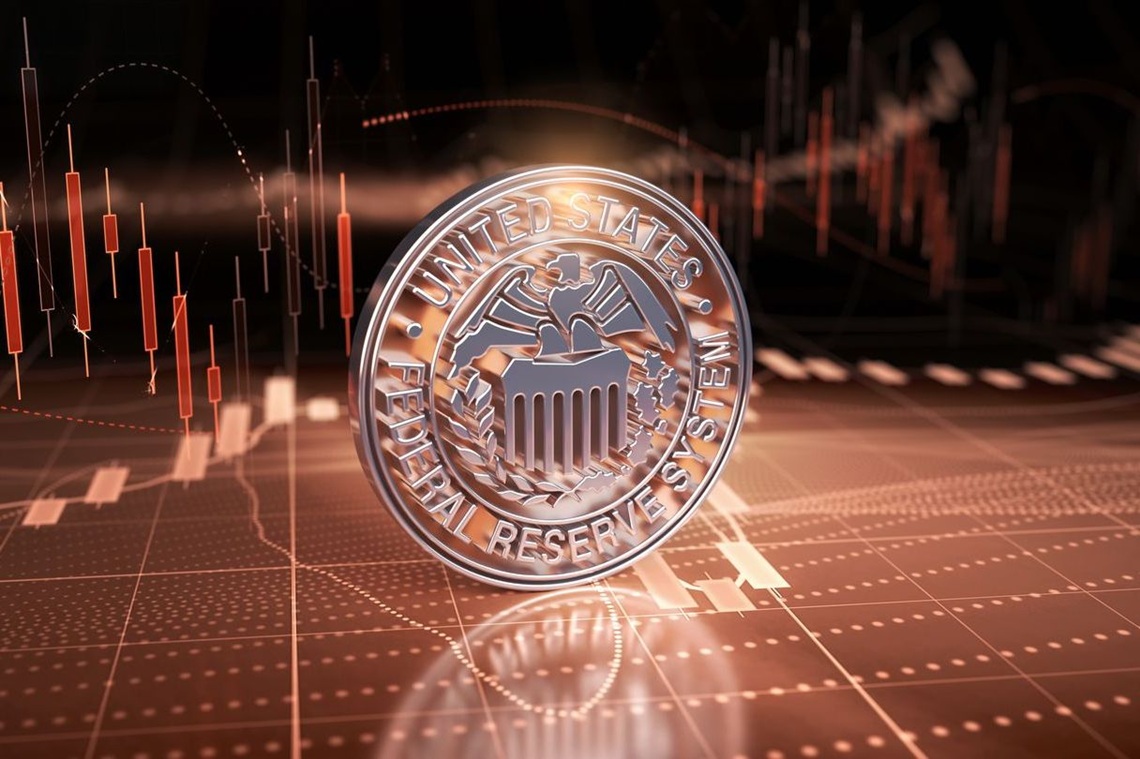Above, Fed Chair Jerome Powell
Rarely has a Federal Reserve meeting been as anticipated as the one that took place May 7, because this one likely had the eyes and ears of President Donald Trump watching and listening closely.
With Fed Chair Jerome Powell under intense scrutiny from Trump, who has insisted that interest rates must be lowered immediately, and has alternately said he would and then would not seek Powell’s immediate ouster, the news of the day was not much news at all, as the Fed decided to leave rate unchanged.
“Uncertainty about the economic outlook has increased further,” officials explained in a statement. “The committee judges that the risks of higher unemployment and higher inflation have risen. In support of its goals, the Committee decided to maintain the target range for the federal funds rate at 4-1/4 to 4-1/2%. In considering the extent and timing of additional adjustments to the target range for the federal funds rate, the Committee will carefully assess incoming data, the evolving outlook and the balance of risks.”
In a press conference following the formal meeting, Powell addressed several questioners who persisted in asking when the Fed might take some sort of action, while affirming that he and the Fed felt no pressure from Trump to make decisions before it’s ready.
“I think there’s a great deal of uncertainty about where tariff policies are going to settle out and also when they do settle out, what the implications for the economy, for growth and for employment will be,” he said. “ It’s too early to know that. Ultimately we think our policy rate is in a good place as we await further clarity on tariffs and ultimately the implications for the economy,”
Powell acknowledged the possibility of rate cuts depending on future economic conditions but stressed the importance of data-driven decisions. Concerns about a potential recession were noted, but Powell remains optimistic about achieving a soft landing. The Fed’s approach, he insisted, remains focused on fostering maximum employment and price stability, unaffected by external pressures, including political calls for rate cuts. He explained that there looks to be progress with the tariffs and how they might affect the economy going forward.
“Our policy is well positioned,” he said. “The costs of waiting to see further are fairly low, we think. So that’s what we’re doing. We see the administration entering into negotiations with many countries over tariffs. We’ll know more with each week and month that goes by about where tariffs are going to land and we’ll know what the effects will be when we start to see those things. I can’t tell you how long it will take, but for now it does seem like it’s a fairly clear decision for us to wait and see.”
Ahead of the meeting, Danielle Hale, chief economist at Realtor.com, noted that this has been a very uncertain time for the real estate market due to several unique factors.
“The March Fed meeting was just seven weeks ago, yet since then, we’ve had a major tariff announcement and rising economic uncertainty as consumers report concern about their personal financial situation, the likelihood of losing a job, and the general business outlook, with the expectations component of consumer confidence falling to its lowest since October 2011 in the April preliminary data. Nevertheless, both March and April jobs reports showed a still healthy labor market, with unemployment at 4.2%.
“Furthermore, after faltering in April, equities markets have regained footing heading into May,” she continued. “While there are questions around what higher tariffs will mean for price growth in the next few months, the recent data showed that March annual inflation ebbed to a 4-year low, a sign that the Fed’s policy moves have been effective, even if there is at least one prominent critic of the current policy stance.
“I don’t have high expectations that this will be a big news event,” she concluded. “As a result, mortgage rates are likely to remain in the high-6% range they’ve held for the last six-plus months. I also expect home sales are unlikely to budge much from their recent trend, even as the number of for-sale homes continues to improve, giving buyers more choice. Still high costs stemming from high home prices and elevated mortgage rates are a particularly tough hurdle for first-time homebuyers, a factor that caused a dip in the U.S. homeownership rate in the first quarter. Those who plan to move forward in the search for a home are not only likely to have more time to make decisions in a slower-moving housing market, they are also likely to see more flexibility from sellers, which is a welcome development.”
This was MBA SVP and Chief Economist Mike Fratantoni’s commentary following the decision:
“MBA forecasts that the risks to growth and the job market will wind up being the bigger concern this year, which will lead the Fed to resume cutting short-term rates in the second half of the year. Until then, the hard data on inflation and unemployment will continue to drive interest rates, including mortgage rates, from one end of a trading range to the other, with only a slight downward trend in mortgage rates over the remainder of 2025.
“Purchase mortgage application volume continues to run ahead of last year’s pace, and MBA forecasts that will be true for the year as a whole, even with the rate volatility we have experienced.”
Melissa Cohn, regional vice president of William Raveis Mortgage, expects mortgage rates to decline as a result of the decision to leave rates as they are.
“The Fed left rates unchanged as the new tariffs have increased the risks that inflation and unemployment will rise,” she said. “Mortgage rates will drop a bit this week as bonds have cheered the Fed’s decision to leave rates alone. Now, it’s back to data-watching and, of course, to see where the tariff negotiations end up.”

